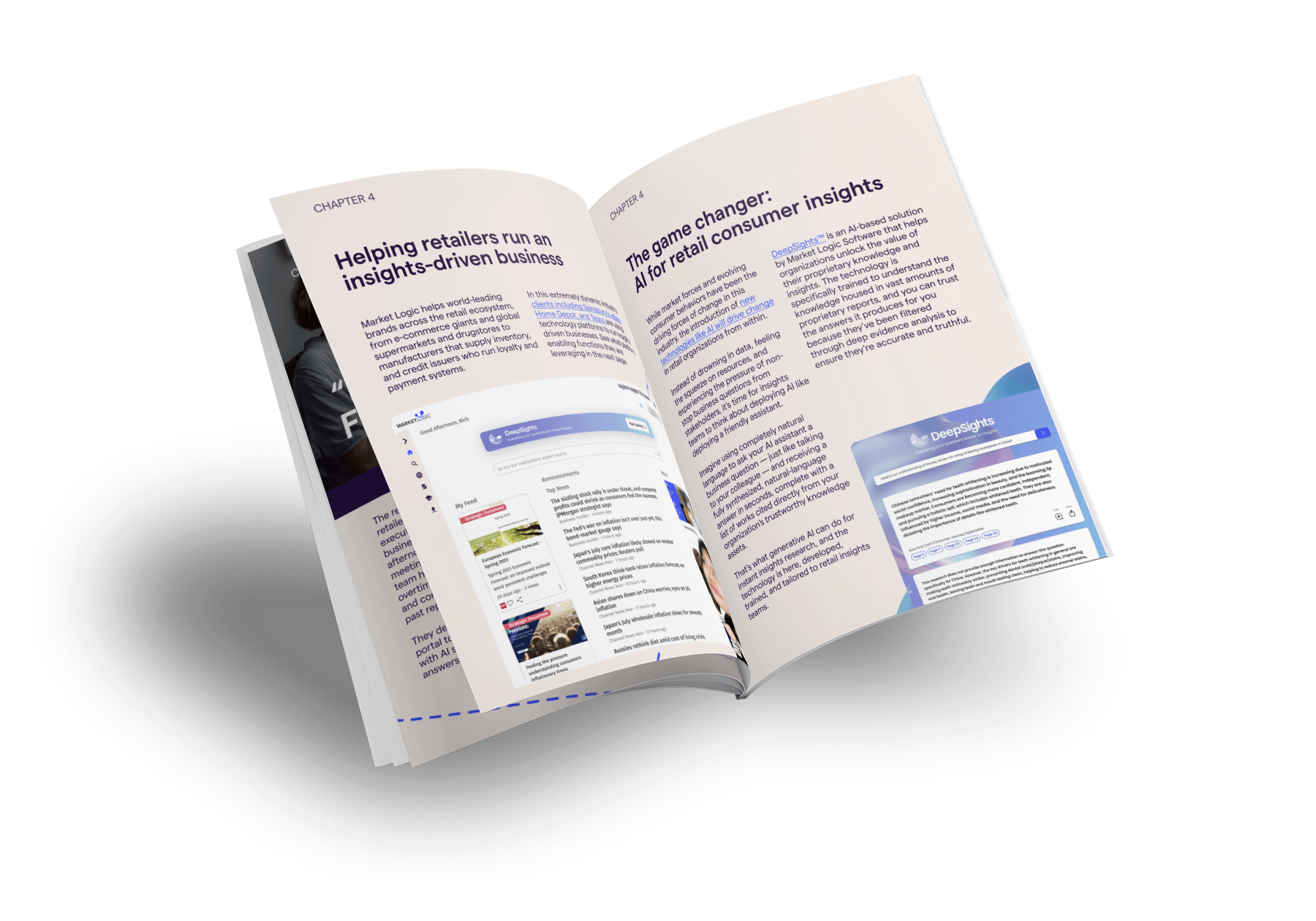NOTE: This case study was written in 2021. It may mention certain product features or applications that have since been changed.
REWE Group is as diverse as its customers. With more than 15,000 stores and almost 400,000 employees, the €75-billion business is best known for groceries, but it also has retailers in convenience, drug stores, pet care, wine, tourism, DIY, and digital systems. REWE Group’s home base is in Germany, but it now operates in as many as 22 countries, and its customers are “hybrid”—they want to have different things at the same time, and sometimes the things they want are at odds.
And like many large, international firms with global teams operating across multiple sectors, and segments, the company’s insights function faces the challenge: how do you scale insights to the size and diversity of the business? And how do you deliver those insights in a way that empowers decision makers to be competitive in a rapidly changing retail landscape?
For Dr. Katia Passari (Head of Business Insights – Retail Intelligence) and Marc Röhder (Project Leader, Business Insights – Retail Intelligence), “knowledge is the only commodity that multiplies when you share it.” That’s why they’re leading the way to scaled insights at REWE Group with their next-generation insights platform, the “REWE Group Knowledge Hub” (also known as “the Hub”). With the Hub’s user-centric design and expert insights-curation, the insights team delivers highly personalized, relevant information to roughly 2000 key stakeholders in the company, and in the past two years they’ve seen its impact on strategic decision making.
REWE Group digitizes long-standing corporate behavior
When it comes to introducing new technology and systems into an organization, it can be an uphill battle against the behavioral change needed to make that technology successful. Katia and Marc’s approach has been to leverage long-standing corporate behavior to drive engagement with the Hub and extend the reach of insights throughout the organization.
“We have a long-standing product that we’ve sent out on Fridays for over 12 years called ‘The Notes.’ It was a PDF document sent via email, which was extremely old-fashioned,” Marc says.
Using their AI-powered insights platform, the insights team transformed their weekly newsletter from a PDF landing in peoples’ inboxes to an automated series of expert-curated newsletters delivered to target groups on their desktop, mobile, and inbox. Because of the excellent response to the general newsletter (push marketing), they created a personalized newsletter (pull marketing), and a promotional newsletter (targeted marketing).
“Users can decide whether they want to share and participate in expert newsletters or whether they want to create their own personalized newsletters,” Marc says.
Content screened and created by expert colleagues is highly competitive and effective in cutting through the noise. “Colleagues gain a different level of trust by receiving information from our experts,” Marc explains. “It gives our users confidence that they can work with these insights.”
Katia says these personalized newsletters are key to developing trust and effectively inspiring users to integrate insights into their decision making. “Everybody can search for something in Google, but the question is whether you can find the right information, know that it’s good, and be able to rely on it when making a decision,” Katia says.
Automated newsletter with significant efficiency gains for our team and throughout the entire organization
“The digital newsletter allows significant efficiency gains for our team and throughout the entire organization, which is nice for us as insights experts, but it’s also saving time for our stakeholders by delivering all the relevant information they need in an easy way. It keeps us close to our users and makes insights an important part of their daily work,” Marc says.
The newsletter has contributed to a huge increase in usership. The Knowledge Hub has seen an extraordinary 720% increase in business users visiting over the past two years.
User-centric platform for data-driven decision making
The Knowledge Hub is a place where insights are sustained and promoted for easy visibility and use by decision makers, Marc says. For REWE Group’s insights function, user-centricity is key to keeping the platform relevant in daily decision making.
“The Hub is designed to be user-centric, to evangelize the big picture across REWE Group, and to promote the latest market and competitor developments, so we can push relevant knowledge to all the places where it is needed,” Marc explains.
Marc points out that it’s an ongoing process with one challenge being to synchronize and align different business divisions, but this process is mitigated by the platform’s customizability.
“We’re trying to give personalized updates on every relevant topic in our business, on supermarkets, discounters, in tourism, etc., and this is ongoing. It’s going to be changed and personalized in a way that our users want—you always need to be close to your users to be an important part of their daily work.”
In the Hub, business users have access to over 6,260 studies, reports, and documents. There are 35-plus curated knowledge zones and over 4,500 expert posts at their fingertips. And the platform seamlessly integrates 10,000-plus news items and over 10,000 results from external sources.
Curated insights inform decision to move into new market
Marc says the Knowledge Hub swiftly delivers fresh perspectives to the business from surprising corners. He shared a recent example of the power of quickly mobilizing new information using the digital newsletter format.
“An intern working with our team saw an Instagram post about instant delivery service. We said OK, she’s young, she knows what’s going on, so we captured the information on the Hub, added a note to the weekly newsletter, and tracked clicks to gauge business interest, which was significant,” Marc says.
It started with streams of individual news sources about instant delivery service, which we and the responsible departments arranged into patterns. Together with our colleagues we visualized the new companies entering the market, which showed a large amount of new competition growth in just two years. We discussed our findings together with the responsible departments so that in the end the CEO had all the information and experts’ opinions available to be able to make the decision on how to enter the instant delivery market.







